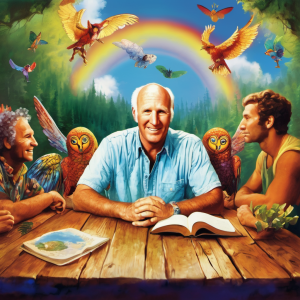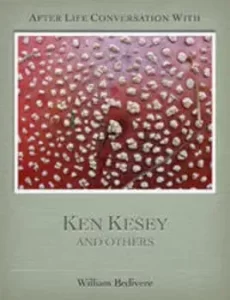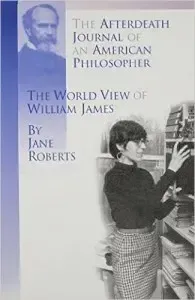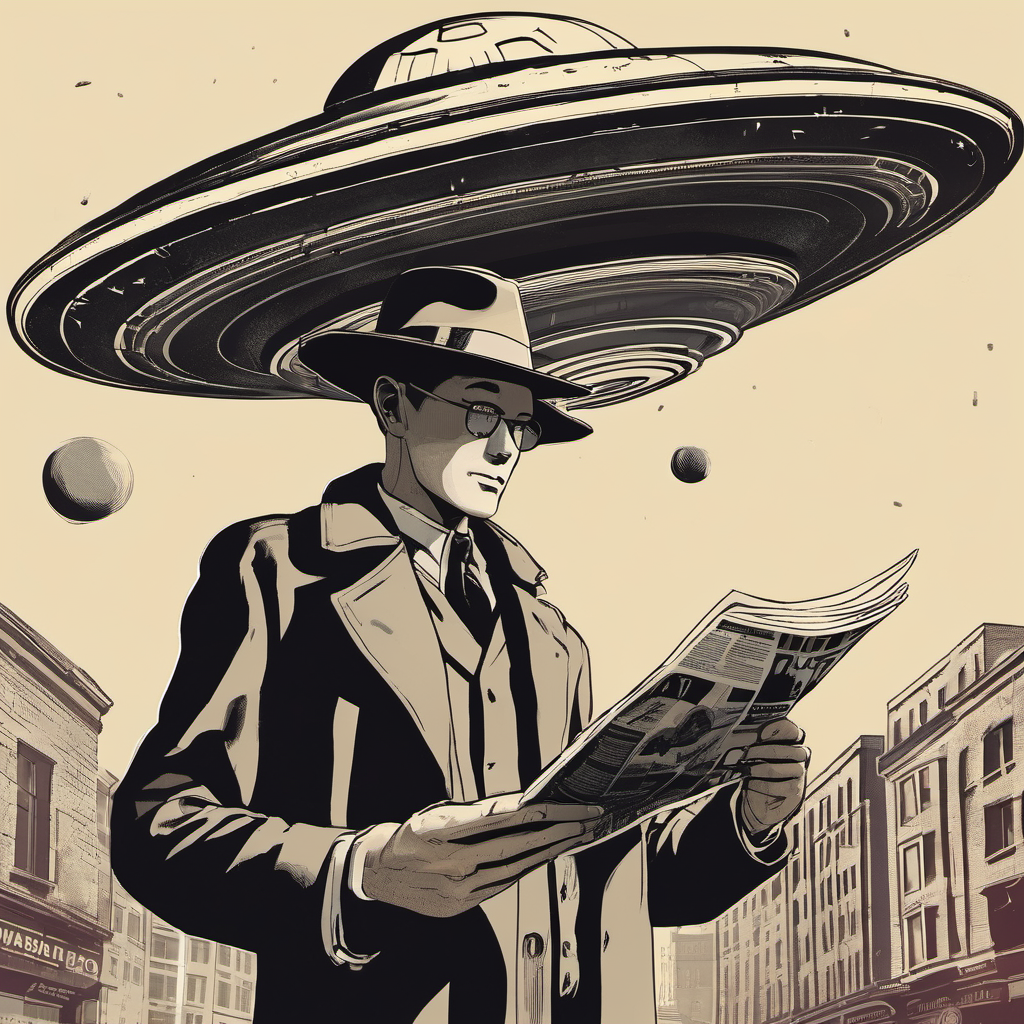
By KEN KORCZAK
In 1972, William Bedivere was a young man browsing the shelves of Banyen Books, an emblematic metaphysical bookstore beloved by seekers & hippies in Vancouver, British Columbia.
He didn’t buy any mind-expanding books that day. However, he did happen to score something even more consciousness-expanding — “a handful” of Orange Sunshine, said to be among the “purest batches” of LSD ever made.
Orange Sunshine is a “brand” of the powerful psychoactive drug that was cooked up in 1968 by Tim Skully in a rogue lab just outside of Windsor, California. Skully rendered an incredible three pounds of LSD which was enough to make 4.5 million hits!
Now fast-forward from the ’70s to Dec. 8, 2011. Mr. Bevidere was back again in Banyen Books almost 40 years later. This time he purchased a title by Mark Christensen, Acid Christ: Ken Kesey, LSD and the Politics of Ecstasy.
Interestingly, visiting the venerable bookshop and triggered vivid memories of his first acid trip decades earlier.
This, in turn, led to a sudden, compelling desire to make contact with the deceased, legendary counterculture author Ken Kesey. Mr. Bevidere had never practiced mediumship or “channeling” before, but he didn’t let that stand in his way. He went ahead using various methods (which I won’t go into) and successfully, he believes, contacted “the spirit” of Captain Flag himself via a kind of channeling process.
 The result was a book, After Life Conversations with Ken Kesey It is a slim volume that nevertheless resonates with multiple dimensions of information if one “reads between the lines” and contemplates the fascinating dialogue achieved between Bevidere and the “soul?” of the late Ken Kesey.
The result was a book, After Life Conversations with Ken Kesey It is a slim volume that nevertheless resonates with multiple dimensions of information if one “reads between the lines” and contemplates the fascinating dialogue achieved between Bevidere and the “soul?” of the late Ken Kesey.
I found this book a challenge to review because so many concepts present themselves, sometimes even in a single paragraph. In fact, I’ll even say that there is subliminal information encoded within certain tracts of this document — but am I going to discuss that here? No way! I’ll reserve that for the master class and another time.
So, let’s move on, and I’ll just zero in here on a few things here:
Ken Kesey is most known for his novels One Flew Over the Cuckoo’s Nest (1962) and Sometimes a Great Notion. (1964). Both books were adapted into popular Hollywood films. Cuckoo’s Nest was a huge critical and financial success, winning the Oscar for Best Film in 1975, and several other Academy Awards.
Of course, Kesey’s other fame was that of counterculture icon status fueled by his high-profile LSD-soaked exploits that became a central element of the 60s hippy zeitgeist. Kesey died in 2001 at age 66.
What’s fascinating about Bevidere’s book is how the “Kesey Personality” channeled by the author at first comes on strong and feisty, spouting lots of groovy, wavy gravy pronouncements typical of hallucinogen-informed concepts representing Kesey’s (early) lifetime personality.
The Afterlife Kesey raves about the War on Drugs, framing it as a power struggle between the forces of evil — you know, the usual suspects — the government, CIA, establishment pigs, religious fundamentalists — against those courageous Consciousness-O-Nauts who dared to smash the status quo wielding a heady selection of psychotropic kickers.
I was fascinated to notice that as the pages melt by, the Kesey Personality gradually recedes. It gives way to a consciously expanded, softer Group-Mind Entity that continues to hold forth with mellower and profound transcendent concepts. In my view, this transition is highly significant and provides an important insight into what all of us need to understand about the nature of our existence.
THE QUESTION OF AUTHENTICITY
Before I go further, a critical issue that must be dealt with for manuscripts that purport to offer information channeled from the dead is the question of authenticity. This is especially true for those readers who are new to what traditionally has been called “spirit writings” or “automatic writing.” In our modern New Age, these ancient methodologies are more likely to be called “channeling” or maybe just “after-death communications.”
Well, I have been reading channeled books and so-called “spirit writing” manuscripts for 50+ years. My opinion is that Mr. Bedivere’s book checks off all the telltale signs of validity.
I’m satisfied that the author is in no way a charlatan spinning tails of pure imagination, or attempting to leverage his familiarity with Kesey’s works to create a narrative that merely parrots what a deceased version of the author might have to say.
One such marker of legitimacy is a sense of the author’s agony in his words.
In this case, we can feel the nagging pain of Mr. Bedivere smoldering in the pages. It’s a plodding existential angst just beneath the surface. There’s a plaintive longing for … for … what is beyond … for meaning. When you combine this urgent need to know, to understand, to seek, discover, to explore with one of the worst sufferings of them all — self-doubt — then you get some measure of the intellectual courage it takes to take on these kinds of after-death communication projects.
Where you find courage, you tend to find authenticity. The author demonstrates all the above. As the novelist Rita Mae Brown said, “A writer cannot hide on the page.”
Thus, I am impressed with a notion that here is a genuine case of after death contact and dialogue with, yes, the “real” Ken Kesey — although I urge my readers not to over-simply who or what the “real” Ken Kesey might be. Now, let’s discuss just that thorny issue:
THE ONTOLOGY OF BEING AND SOUL
It’s probably the most common belief that after a person dies physically, his or her soul soon sheds the “ego-shell” that they operated under during the time the person spent on earth. They cast off the ego like an old coat and suddenly enjoy an expanded sense of awareness, leaving behind all the negativity, fears and burdens that accompany a “hardened personality” that was the earth-bound persona.
But there is ample evidence that the ego-based personality also survives — even while the individual enjoys the kind of “expansion” described above. The ego remains, but now it become just a part of a larger framework. In my view, the fact that the ego survives and is carried on into the Afterlife is a good thing, not a bad thing — I say this partially based on my 44 years of daily Zen meditation practice.
Former NASA physicist and early MONROE INSTITUTE research pioneer TOM CAMPBELL calls an ego-retaining-yet-expanded individual a “Free Will Awareness Unit.” (FWAU) (Note: I’ll be borrowing a couple of Campbell’s terms here because he has coined some of the most lucid and descriptive jargon for all of this).

The FWAU, in turn, is part of or an aspect of an Individuated Unit of Consciousness (IUC) — this is the element of the person who “operated” the FWAU while it was “alive” in physical 3-D reality. The ICU is not in physical reality but in the nonphysical realm composed of pure Consciousness. The IUC is a part of a larger organized system of consciousness that we might call an “Oversoul” (Note: the latter is a more traditional term, not Campbell’s).
The Oversoul is a kind of “gestalt mind” entity that encompasses and incorporates dozens, hundreds, but most likely thousands of “people” or individuals that also once manifested in our 3-D physical reality as Freewill Awareness Units (people) here on our planet Earth. I could continue going “up the ladder” to higher and more complex organizations of consciousness, indeed, all the way to “The One” or “All That Is” — but that is a long journey indeed, so let’s stop there.
So, when a medium, or someone like our writer William Bedivere, contacts a specific individual, in this case, the famous Ken Kesey, he can at times be communicating with:
–> That which was the Freewill Awareness Unit (FWAU) that was Ken Kesey.
–> That which was the IUC, the Individuated Unit of Consciousness that operated the FWAU of Ken Kesey.
–> Both the FWAU and IUC at the same time.
–> The Oversoul of Ken Kesey
–> One or several or all of the upper levels of “Group Consciousness” organizations to which all the “lower” Ken Kesey elements belong.
–> All of the above.
What is clearly demonstrated in Bedivere’s book is how the author comes to get a sense of this larger multidimensional nature of the Kesey personality. The “Greater Ken Kesey Consciousness Organization” (my term) slowly reveals itself as the pages go on from beginning to end of this book.
There is something else important to point out here:
If we want to, the channeler can focus his or conversation with a deceased individual on communication that is strictly limited to just the Freewill Awareness Unit, or that which was the ego-based consciousness once manifested in 3-D, physical matter reality.
But can it be said that this “version” of Ken Kesey is the actual Ken Kesey? The answer is mostly “Yes!” but it comes with this critical distinction, or perhaps a caveat:
The “Greater Ken Kesey” has actually moved on to other, higher realms of consciousness. His mission on earth is done. He has little or no reason to hang around for years on end merely in the event that someone like William Bedivere (or anyone) wants to have a conversation with him.
However, we can still have a perfectly legitimate communication with that individual we once knew as Ken Kesey as he once was. That’s because we can connect with the sum total of the “data” that was once Ken Kesey — Tom Campbell calls this a “supremely complete probability record.”
This “supremely complete probability record” might be compared to a computer file that has been saved, but it is an extremely complete file that contains absolutely everything that Ken Kesey once was down to the very last atom, electron, neutron, quark — everything!
So, in essence, IT IS KEN KESEY!
I emphasize that, even though the “Greater Ken Kesey” has moved on, this “supremely complete probability record” that we can now communicate with is in fact Ken Kesey because it is an absolutely total, perfect and “supremely complete” copy of what was once the physical reality ego-based Ken Kesey.
 (Note: For an excellent discussion about the legitimacy of a “perfect copy” of a human being after death and “resurrection,” see this book: The Physics of Immortality, by Temple University Professor of Quantum Physics, Dr. Frank Tipler).
(Note: For an excellent discussion about the legitimacy of a “perfect copy” of a human being after death and “resurrection,” see this book: The Physics of Immortality, by Temple University Professor of Quantum Physics, Dr. Frank Tipler).
Note that because the “Greater Ken Kesey” has moved on, the “Perfect Copy” of Ken Kesey that was once his Freewill Awareness Unit no longer has all the free will it once did — although it can seem like it has free will because it can answer our questions based on an almost infinite number of probability choices.
For example, we can ask a question in 100 different ways with 100 different intents, and the FWAU of Ken Kesey will respond differently to each one based on the nature of our intent and the way we ask the question. Left to itself, however, the FWAU of Ken Kesey cannot innovate because the Greater Ken Kesey has moved on, and the FWAU is now a “closed system.”
However, innovation and free will volition and awareness can “bleed” into the responses we get if higher aspects of the FWAU get involved. A spectacular example of this is the work of prolific author, publisher and exoconscious explorer Frank DeMarco, also the co-founder of Hampton Roads Press. DeMarco has engaged in extensive after-death conversations with the deceased, including the writer Ernest Hemingway and many other transitioned souls.
Note: See my review of DeMarco’s channeled Hemingway book HERE.
It’s proper to bring DeMarco into this conversation because Mr. Bedivere acknowledges DeMarco as the inspiration for his work with Kesey. Belvidere is an avid reader of DeMarco’s works and a participant of DeMarco’s website conversations that can be found here: I OF MY OWN KNOWLEDGE.
In my opinion — and perhaps DeMarco himself may not entirely agree — the bulk of the information he is channeling from “Hemingway” is that “saved copy” of what was once the Hemingway Freewill Awareness Unit. From time to time, however, “higher aspects” of the Greater Multidimensional Hemingway do come forth to further inform (and innovate with free will) the communications between DeMarco and Hemingway.
Most of the time, though, it seems to be DeMarco’s intent is to keep his communication with Hemingway focused as close as possible on the ego-based Hemingway we know from history. That’s because DeMarco holds a scholarly fascination with the life and times of the “real, physical” Hemingway, and the specifics of his literary works, his politics, beliefs, etc.
If DeMarco “intended” more or otherwise, he could certainly “climb the Multidimensional Hemingway ladder,” so to speak. The case is similar to this book which channels the afterlife version of Ken Kesey.
 Another example I must mention is that of Jane Roberts, author of the famous Seth books. Roberts also channeled a book-length document in cooperation with a great deceased personality, that of philosopher and proto-psychologist William James, producing, The Afterdeath Journal of an American Philosopher. The book is a masterpiece.
Another example I must mention is that of Jane Roberts, author of the famous Seth books. Roberts also channeled a book-length document in cooperation with a great deceased personality, that of philosopher and proto-psychologist William James, producing, The Afterdeath Journal of an American Philosopher. The book is a masterpiece.
What’s interesting to note is that Roberts was circumspect about just who or “what” with whom she communicated. She speculated that she was not so much having a conversation with the “real spirit” of William James, but rather the existent and detached “World View” of William James, which was somehow stored out there in the greater realms of the Conscious Universe.
This sounds an awful lot like Campbell’s model of the Freewill Awareness Unit.
ANYWAY …
I have rambled on far too long, and yet, have not touched on all aspects of the rich load of material and implications suggested by William Bedivere’s book detailing his conversations with the transitioned Ken Kesey.
I would be remiss if I did not mention that Mr. Bedivere’s book is engagingly written. And don’t be quick to credit the lively prose to Ken Kesey himself! Far from it! I can guarantee that the credit belongs to Mr. Bedivere, but if I try to explain why I’ll be off and running through several more pages.
There are also instances of true hilarity!
In a couple of cases, Mr. Bedivere sees fit to ask his transcendent connection with an ascended great author incredibly mundane questions — such as what to do with a problem he is having with his taxes! Lol! It’s great!
On another occasion, Bedivere asks for advice on what to do about some very typical marriage problems his daughter is having — and here Kesey coughs up:
- a) A bit of non-advice, and,
- b) A dollop of sensationally bad advice!
Oh man, it’s so funny!
Never discount humor as an important marker of authentic Afterdeath communication or the channeling of authentic transcendent information! I’m reminded of the British philosopher Bertrand Russell who said that he was troubled that the Bible contains no humor. For Russell, that is enough to cast doubt on the legitimacy of the Holy Book.
Ah … I wish I could go on … but it’s past time that I pull the chain (as they say in the hood). Suffice it to say I consider this small book a gem, and an authentic example of afterlife communication that bears reading and rereading. Each time delivers a different set of insights to the open-minded, skeptical, and always intuitive-oriented reader.
NOTE: For reviews and analysis of book about the Afterlife, please see: KEN-ON-MEDIUM.

Hi Ken, Wayne Saalman here! I loved this story! You may recall, perhaps, that I wrote about meeting Ken Kesey in my book, The Journey Across Forever, and told how I could see a golden aura around him (See Chapter 18 of the book – entitled The Merriest Prankster). He was (and is) definitely an advanced spiritual being, which is to say one high-flying spirit, as are you! Your openness to all possibilities is next to none! (Please contact me, if you don’t mind, on my private email as I would like your thoughts on a matter concerning my next book.)